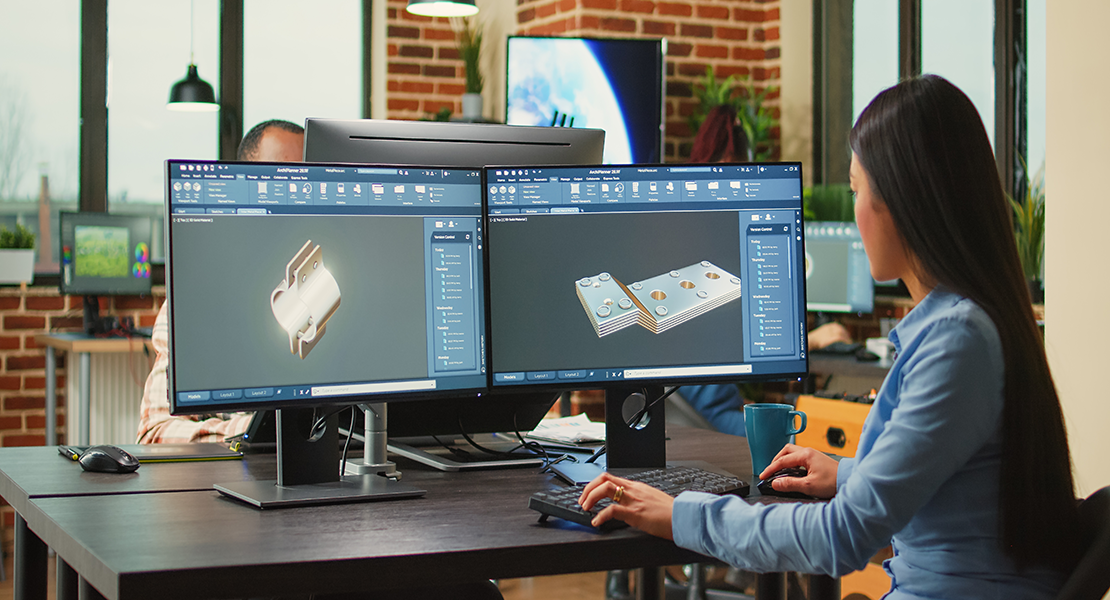Computer-Aided Design, CAD for short, is the use of computerised technology in the design and modification of a physical product or creation. These softwares and technologies are used in a number of different industries for a number of different reasons and can provide the designer, manufacturer and consumer with plenty of benefits. From artists to tool makers, computer-aided design can increase productivity, maintain design and production quality, organise data and improve communication strategies. As technology grows and becomes so prominent in the workforce, the market for CAD has expanded significantly and is expected to carry on doing so over the next few years.

Who uses CAD technology?
With such an array of softwares and versions available, CAD is being used by a variety of different professionals across the globe. Offering unique advantages to everyone, the constant updates are providing designers, engineers and the construction industry with efficient, low-cost solutions that were once limited in regard to quality, detail and development. Industries such as game developers are using CAD to explore deeper visual customisation and create an immersive experience for customers whilst engineered are using these softwares to improve the rapid prototyping process. Here are just a few of the main industries that are utilising CAD technology.
- Automotive
- Engineering
- Dentistry and pharmaceutical
- Architecture
- Fashion and textiles
- Toolmaking and tool design
- Graphic and product design
2023 CAD technology trends
Each year brings new updates in the world of technology, design and manufacturing and computer-aided softwares is constantly evolving in order to stay on top of consumer demand and industry needs. Let’s take a look at some of the top trends in CAD in 2023 so far.
Internet of Things (IoT)
Defined as the network connecting different objects through sensors and applications, IoT is being used to combine devices and communicate through the internet. In terms of IoT in computer-aided design, this modern function allows products to communicate throughout the design process, allowing professionals such as engineers to have all their systems, files and units interconnected in one automated accessible place.

Cloud computing
As one of the latest trends in CAD, cloud computing involves the worldwide access of software and files, accessible on multiple devices at any time. Benefits of cloud computing include straightforward updates, mobility, enhanced storage capacity, collaborative working, cost and time efficiency.
Mobile connectivity
In today’s world, nearly everyone has a mobile phone and not only do they own one, but they use it every day, for a number of different things. So the connection between CAD and mobile was always highly likely. Being able to access and process CAD through a mobile device is one of the biggest developments in the industry, allowing users to use apps, tools and data from anywhere in the world. This new trend is constantly improving and is proving to increase productivity, communication, efficiency and accessibility. Mobile connectivity is also offering benefits to the consumer/buyer as it limits transport and they can review and analyse designs on the go.
Augmented reality
AR, which is short for augmented reality allows users to visualise digital content in a real-world environment or scenario, typically through a mobile device. This trending feature enables fast, effortless collaboration between a company and a client and gives an in-depth, physical viewing of a product. AR is ideal for product modifications and analysis as it allows users to view different angles, zoom into specific parts and envision it in its surroundings.
3D modelling
Although it’s been around for many years, 3D modelling is becoming more affordable and accessible for a range of different industries. These softwares and machinery can lead to more innovative designs whilst also producing a product that can be analysed and modified by both the designer and consumer. This modern and adaptable function is beneficial for industries such as tool design, automotive or product design.
For more on 3D printing, have a read through our blog on what is 3D printing?

Tool design services across the UK
Before our team of toolmakers can get their hands on the mechanical part, Pro-Moulds will work with you to ensure your initial design and thought process can come to life, creating both simple and detailed briefs to get the ball rolling and create the perfect tool!
Using advanced technology and the latest software, we’ll work with you to design and create a tool which is fit for purpose, is comfortable to use and will last years to come.
Please contact us on 01623 904 417 to get your design journey started!
